Adam Larson / Caustic Logic
[USS Liberty series]
May 31 2009
So far in my investigation of the Liberty incident, I’ve reached a similar conclusion to that of many survivors – the ship’s identity was likely well known to its Israeli attackers, both at the tip of the spear and at the shoulder of command. However, one of the lynchpin arguments of the survivors - that the American flag flying from their main mast had to be visible and known throughout the day – comes in far down the list of egregious and persistent “mistakes” by the Israeli Defense Forces. These moves all share the common denominator of justifying the attack, with varying degrees of plausibility from the humdrum to the absurd, and beyond. I find failing to note Old Glory relatively believable, and, as if my opinion matters, I’ll explain why.
In my first arguments, I started to question how the pilots could miss the huge friggin’ American flag, but then decided I’d better check if I could see the thing. It took a little while to find a clear enough shot to even make out the little scrap nestled up there, less visible than the nearby signal flags. Along this line, accident advocate Dr. Marvin Nowicki makes a valid point:
”In reconstruction of the attack, the Liberty crew makes much of flying the American flag, as if it would somehow protect them in harm's way. Little does the crew appreciate the difficulty of identifying a ship from an aircraft merely on the basis of a flag or even a hull number (GTR 5 displayed by the Liberty). […referring to photograph below…] This crisp overhead photo does not clearly show the identity of the American ship. So how could the attacking Israeli forces conclude this was a friendly ship?” [1]
 This is the photo in question, here with the flag area actually highlighted with realistic colors. It’s still hardly more than a speck. Now I do see a clear difference between the flag and the hull number, well-illustrated by the same photo, which does in fact identify the ship with or without the flag being noticeable. No one has had any doubts if the hull was fully extended or drooping and unreadable; the “5” in particular is ten feet high, all letters of the solid block type, with offset drop-shadows to enhance clarity. This designation belongs to only one ship in the world.
This is the photo in question, here with the flag area actually highlighted with realistic colors. It’s still hardly more than a speck. Now I do see a clear difference between the flag and the hull number, well-illustrated by the same photo, which does in fact identify the ship with or without the flag being noticeable. No one has had any doubts if the hull was fully extended or drooping and unreadable; the “5” in particular is ten feet high, all letters of the solid block type, with offset drop-shadows to enhance clarity. This designation belongs to only one ship in the world. Among the Liberty’s own mistakes that clearly brought it on themselves, per IDF, are “failure to signal,” changing direction, “running away,” hiding under smoke, trying to guilt trip them with the dead guys bleeding on deck, etc. (okay, I made up the last one) “Another grave error” discussed in Col. Ron’s report is that “it seems that the ship made every effort to conceal her identity” by, for example, “flying a small flag which was unidentifiable from a distance.” [2] He doesn't clarify whether the flag was smaller than it should have been or just small enough to offer as an excuse.
IDF records have admitted absolutely no reports of a flag from their the eight-plus aircraft orbits conducted over the day. Official records show the attacking planes never noticed such a flag, nor the Motor Torpedo Boats that nearly sank the Liberty. As Judge Yerushalmi’s report put it (once translated) “throughout the contact no American or any other flag appeared on the ship, and it was only a helicopter, sent after the attack in order to render assistance--if necessary--which noticed a small American Flag flying over the target.” [3] This total absence I find both unlikely and at least faintly possible.
The Hull number on the other hand was something they couldn’t even pretend to miss, and was reported multiple times. The first such acknowledgment came after the 0600 Noratlas overflight; the accurate reading “GTR-5” generated a precise ID as the USS Liberty, which was almost instantly erased for still-debatable reasons. It was eight hours later when the hull no. was reported again as “CTR-5” - not enough to name the Liberty but enough it had the air attack called off after a fierce fifteen minutes. This failed to prevent the MTB surface attack, which was finally cancelled after all but one of its torpedoes were spent. It wasn’t a flag they explained this with, but the same hull no. seen again, not far from the bungalow-sized hole they just blew out of the hull. [details on this]
That’s a powerful identifier, and could have averted catastrophe, rather than just tripping it up a bit. If GTR hadn’t been erased, CTR would mean something, so this decision trumps the more wiggly flag issue in my mind.
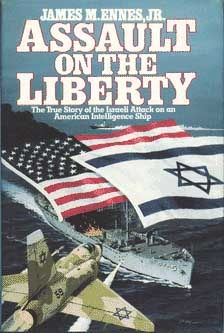 At times it seems keeping this particular issue front and center is more motivated by symbolism and appeal patriotism than by pure evidentiary considerations. What it really does is dramatize the patriotic war/sacrifice/vengeance/etc. aspect and taps into the old us vs. them mentality. Consider the painting on the cover of James Ennes’ book – Star of David vs. Old Glory, emphasis on “vs.” Interestingly, it seems this painting is based on the same photo of the ship as above, but with the barely visible real flag eclipsed by the mammoth symbolism. Hardly any dedicated patriot can’t help but be effected by this dichotomy – whether it’s toward questioning the accident or away from it is bound to vary.
At times it seems keeping this particular issue front and center is more motivated by symbolism and appeal patriotism than by pure evidentiary considerations. What it really does is dramatize the patriotic war/sacrifice/vengeance/etc. aspect and taps into the old us vs. them mentality. Consider the painting on the cover of James Ennes’ book – Star of David vs. Old Glory, emphasis on “vs.” Interestingly, it seems this painting is based on the same photo of the ship as above, but with the barely visible real flag eclipsed by the mammoth symbolism. Hardly any dedicated patriot can’t help but be effected by this dichotomy – whether it’s toward questioning the accident or away from it is bound to vary. FIFTEEN THOUGHTS: PRO AND CON
Now, clearly the U.S. flag is a crucial clue that should have been seen at some point. And given the general pattern of errors and missed signals in IDF command that day, I have a hard time accepting that – again - all parties had genuinely missed the flag from sunrise until just after the attack. Taken on its own, however, I admit it seems possible, and not even bizarre. So I can see both sides on this one and don’t normally go on about the flag when there are stronger cases to make. However, here are some final flag thoughts from both sides – “pro” means a point supports that the flag should have been seen and reported, and “con” indicates a reason maybe it wouldn’t be so clear.
Con: At one point at least, the flag then flying was found to be tarnished "tangled in the lines [...] dark with soot and badly tattered," according to James Ennes, who caught it and ordered a new flag up shortly after 0700. [4] This may well have been a factor in the 0600 sighting, which ironically was the only pre-attack inspection of the Liberty that yielded an accurate ID.
Con: Both the tarnished flag and its replacement were quite small relative to the ship – app. five by eight feet (see picture above, and K.J. Halliwell’s examination of flag size).
Pro: The ship’s weather log plus speed and heading shows the flag should have been at least largely unfurled as the air attack began; Ennes concluded 12 knots relative wind at 1300 (5 knots from ship speed. plus 7 of wind on a similar line back) [5].
Pro: Wind would probably be similar at 1400 as IDF sources cite “a run over the ship” by the fighters prior to attack, looking for a spread flag (“but found none”). [6] The witness record seems to show immediate attack. IDF transcripts show nothing but a one-minute distance survey (“warship” was the only conclusion) prior to strafing. [7] That someone apparently made up the looking for a flag, or removed the episode from the tapes, supports that the flag was visible.
Pro: unfurled or drooping is not as relevant as its made – if they could see it well enough to identify spread, they could have identified it limp as well, if they cared to. US would appear prominently as red and white jumbled, or “splashed” together, perhaps looking pink from a distance, with a blue corner visible even drooping. Either a Soviet or an Egyptian (U.A.R.) flag would stand out like – well, a red flag. Solid red is vivid, and it wasn’t there to see.
Pro: A photo as above is not a good model – they’d see the any flag moving over time, rippling even if subtly. You might glimpse a red-white-pink flicker, zero in and see a wobbling dark blue patch cover it, with no bold red visible. What flag can that be?
Con: As Nowicki wrote: “Based on my experience of flying many "low and slow" reconnaissance flights over ships in the Med and Atlantic with VQ2, unless the flights are almost overhead, target identification is virtually impossible." [8]
Pro: The attacking aircraft supposedly felt it was possible enough to try, they were directly over the ship, at close and low quarters, passing over it from different angles for at least five minutes each wave. In the early part of the attack at least the flag and hull no. should have been discernable to one of the pilots on one of the passes, at the very least.
Pro: Several witnesses (including Nowicki) claim they heard transmissions or saw transcripts of same showing the IDF pilots did spot the U.S. flag and reported it, either before the first strafing run, which was ordered regardless, or during the attack, causing it to be broken off. If so, this means the IDF altered their records, further illustrating guilty conscience.
Pro: If they were unable to verify a flag when it was up, the pilots became strangely able to know when it was down; the decisive “there’s no flag on her!” was reported at the end of the air attack, 1414, alongside the hull no. report. [9] By this time the statement was actually true; the halyard line it swung from had been severed in the attack, and the flag lay face down on the burning deck. This indicates to me he knew where it had been and wasn’t anymore.
Pro: The motor torpedo boat crews were perhaps close enough to actually observe the larger (8x13?) replacement flag being hoisted for their arrival, and it almost certainly should be visible by binoculars once they got closer. The ship was sailing at something over ten knots due north before they hit it, so some cross-wind should have been lifting the holiday colors.
Pro: The MTB crew don’t acknowledge (in their log, or that of Navy HQ) seeing the flag until the helicopters told them about it at 1512, after they’d spent the better part of an hour hanging out within a mile or less of the ship. This reeks more of omission than of anything else.
Con: The ship was of course by then emitting a mass of smoke from the air attack. The fires were partly under control, but still factors of some visibility impairment.
Con: In the photo above the flag seems perhaps 6-800 feet from the camera – the MTBs were app. ten times as far off (accounts vary), perhaps too far to identify, when they decided to drop their torpedoes at 14:35.
Pro: The IDF records flaglessness finally runs out with the second rescue helicopter pilot who finally saw the stars and stripes and reported it as such, verified in a second pass. It was 15:12. As a journalist reported of a 2003 talk with James Bamford, “if the helicopter pilot saw those identifiers, Bamford asks, why didn't the fighter pilots and torpedo boat crews?” [10] There may be legitimate technical explanations, but we can’t ignore the common theme among those who failed to see – they were the ones shooting the ship, perhaps sent to simply attack, not look at stuff.
Sources:
[1]Nowicki, Marvin. Exculpatory evidence supporting a mistaken attack. Undated message to James Bamford. http://www.libertyincident.com/nowicki-evidence.html
[2]
[3]
[4] Ennes, James. Assault on the Liberty. 1979. P
[5] See [4]. pp 245-247 (Appendix H)
[6]
[10] Shane, Scott. NSA tapes offer clues in '67 attack on U.S. spy ship. Baltimore Sun. July 16 2003. http://www.freerepublic.com/focus/f-news/947319/posts


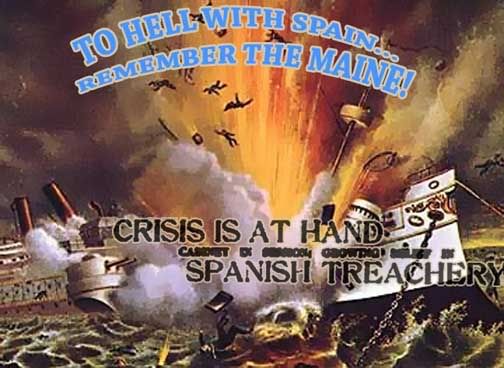
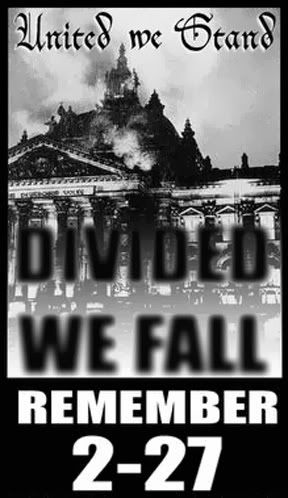


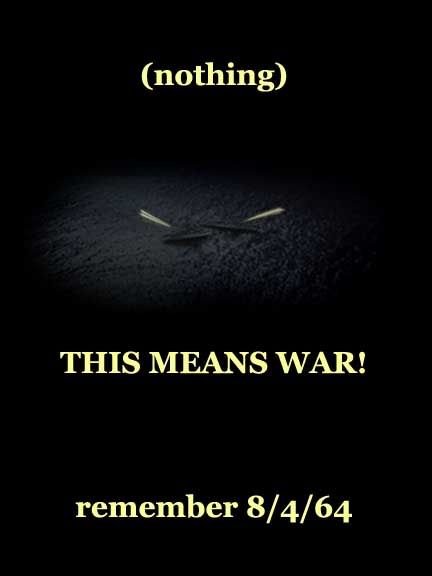


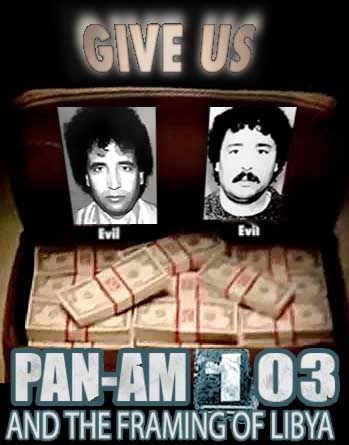



No comments:
Post a Comment